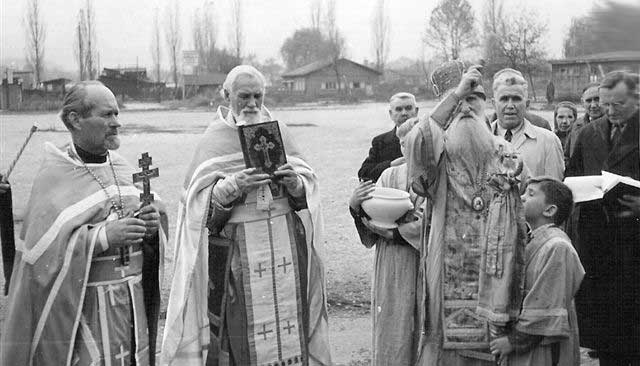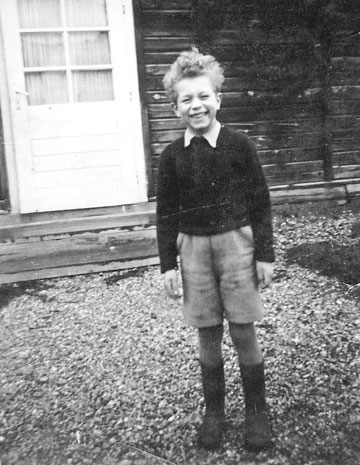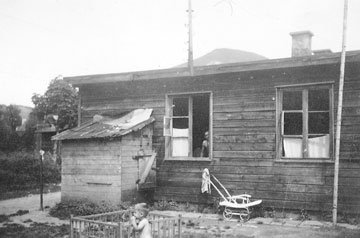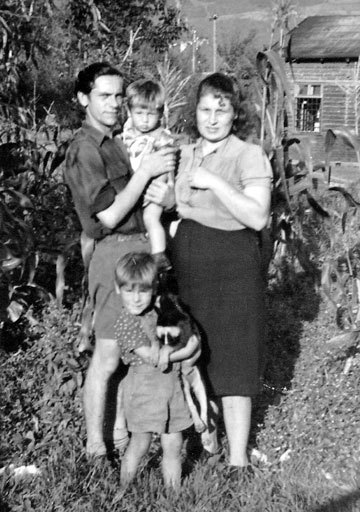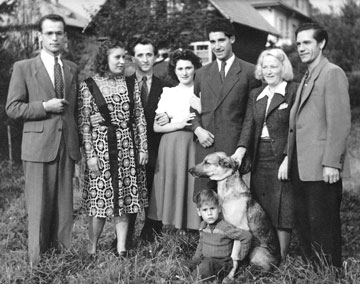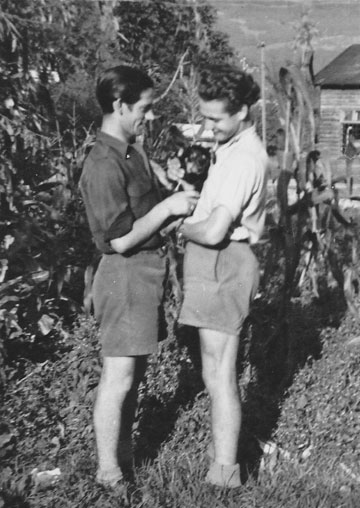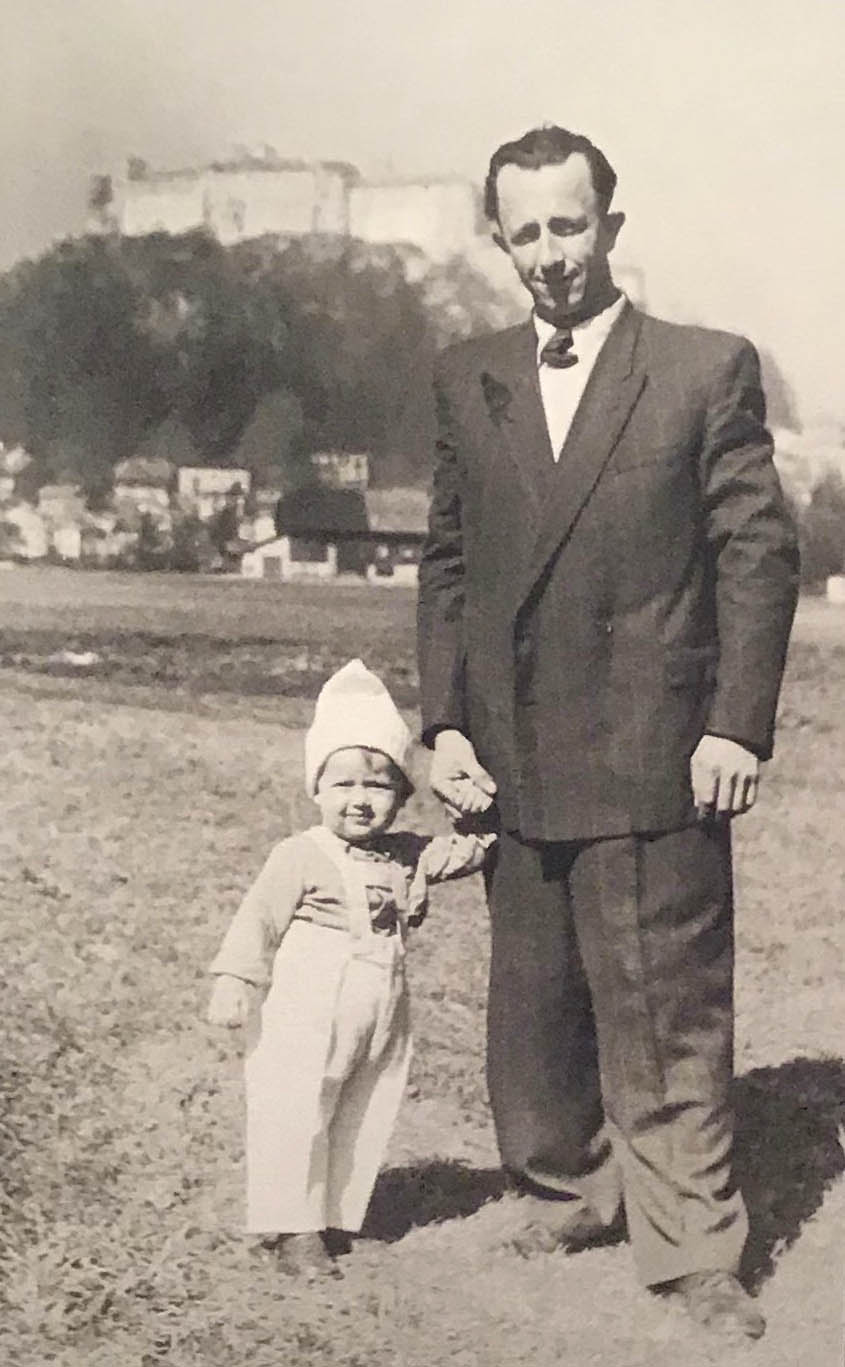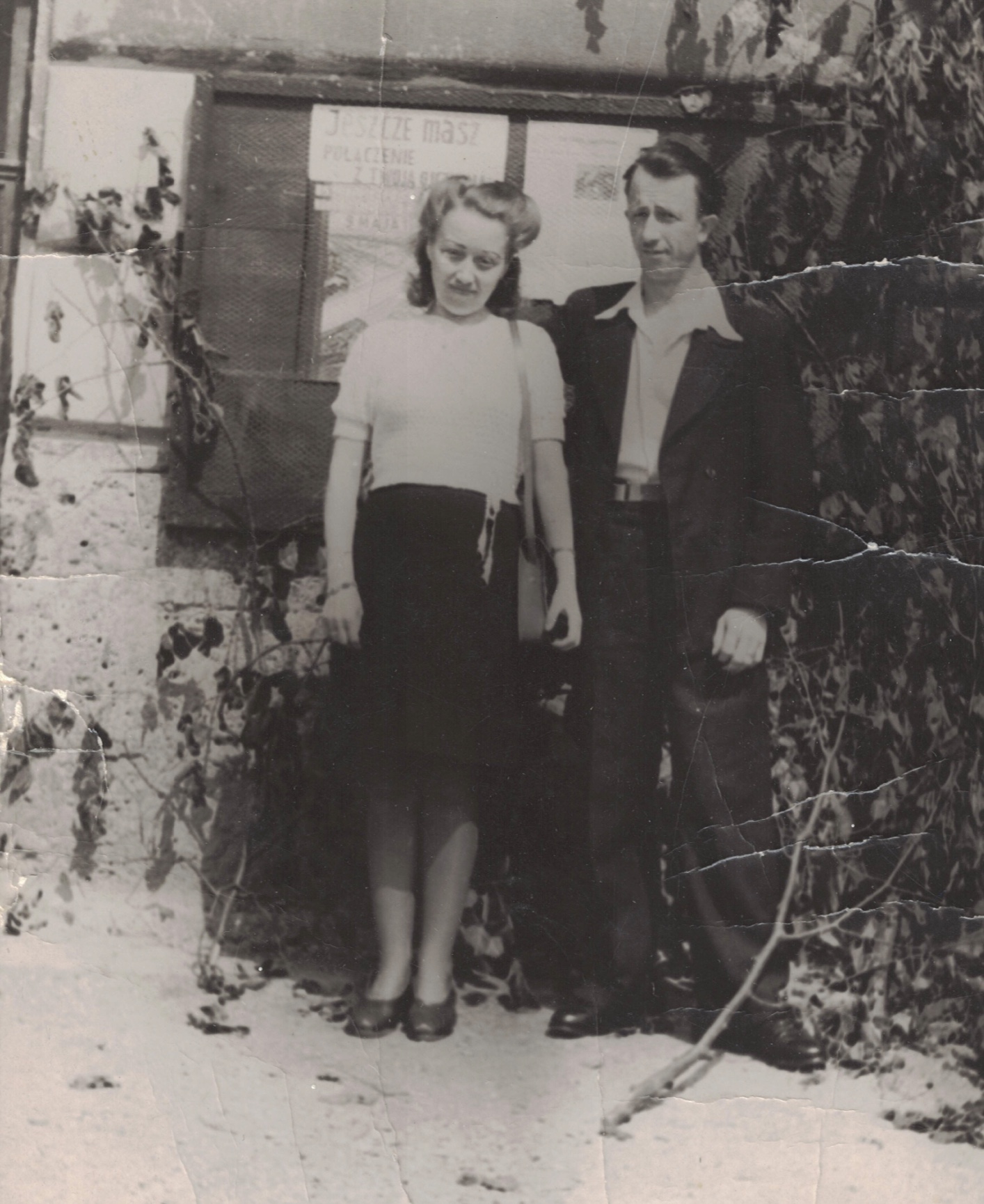Download the 2011 Excel spreadsheet (in German) of camps and camp info: AustriaCampsV7.xls provided by Klaus.
Austrian archives - https://www.oesta.gv.at/bezirks-stadt-und-kommunalarchive
Haid (Lackner) has its own page - Anfelden camp 121; Linz; US zone;
Hafendorf - KG Kapfenberg II; British zone; Nr. 7 YAC.
Hafnerriegel 13 - Graz; British zone
Haiming - Inn river, Ims UNRRA team 200; French zone;
3/14/05 My family was in a camp in Haiming, Austria, near Imst after the war.
I have a book which discusses the camp.
Thanks Gabriele I. Halsall
Hallein, Land Salzburg ; UNRRA team 324 ?; Jews - Hallein, town, north-central Austria, on the Salzach River just south of Salzburg city, Beth Israel, US zone,
City archives: Stadtarchiv Hallein, Keltenmuseum, 5400 Hallein
As far as I know, the photographer for this series was Stanley Kessler, born Shia Keslovich in Bilgoraj, Poland around 1910. I also have my father’s ID papers from the International Refugee Organization, Austria.
People interested in Hallein:
Please take a look at the Facebook page here https://www.facebook.com/groups/301839019976701/ and join the discussion.
Steve Wernick
Hangweg - Zeltweg; British zone;
Hans Bauer-Weg- Leoben; British zone;
Hans Fritzl- Weg (way) - Graz; British zone
Heidestrasse 2 - Wien, XI;
Heilbrunn
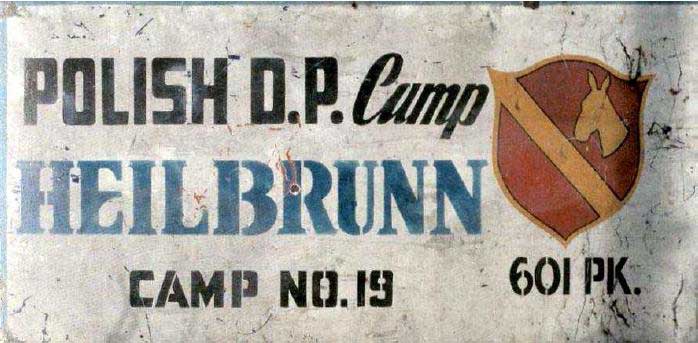
Polish DP Camp #19. - 601 pk.; District Salzburg- Süd , US zone
Can anyone come up with information about H e i l b r u n n camp?
1) why the Camp is misspelled Heilbrunn instead of Hellbrunn correctly ? -- Two different cities.
2) which organisation (military unit, etc.) is symbolized by the coat of arms (orange horse head on red shield) ?
3) what the code "601 PK." beneath the emblem is standing for ?
4) in which numbering system the camp was assigned "No. 19" ?
Ask your father or grandfather if they are from this area.
Kann jemand kommen mit Informationen zu diesem Lager? Fragen Sie Ihren Vater oder Großvater , wenn sie aus diesem Bereich sind .
1) warum die Camp richtig falsch geschrieben Heilbrunn statt Hellbrunn ?
2) die Organisation ( Militäreinheit , etc.) wird durch die Wappen (orange Pferdekopf auf rotem Schild ) symbolisiert ?
3) was der Code " 601 PK . " unter dem Emblem steht für ?
4) in dem Nummernsystem wurde das Lager "No. 19" zugewiesen ?
Es besteht auch die unwahrscheinliche Möglichkeit , dass diese Platte stammt aus der deutschen DP Camp Heilbronn, wo es auch polnische Häftlinge ?
1/4/2016 Dear Olga!
I read in an article on your website "dpcamps.org" something about the Camp Nr. 19 in HEILBRUNN.
My statement of this camp is as follow:
In GERMANY there was a DP-camp named HEILBRUNN.
But: The AUSTRIAN camp HELLBRUNN was in the district of SALZBURG. (US Zone)
There is another HEILBRUNN in the district of STYRIA, Austria.
BUT: The district of Styria was NOT OCCUPIED by the US ARMY.
On the shield in your website we see as follow: The name "HEILBRUNN", Camp 19, and an US coat of arms.
It is possible, that the coat of arms is an early symbol for the US CAVALRY.
Some US-Cavalry Batalions were reestablished as motorized US CONSTABULARY immediatly after WW II.
The US constabulary was also used as occupation troops.
Best regards
Thom-George Lackner firstsouthart@hotmail.com
Historian
Austria
Heizhausstrasse - Villach; Linz; British zone;
Hellbrunn - reception centre, Land Salzburg; US zone; UNRRA Team 316, mit Alters- & Kinder [with elders and children]; Poles; See Satzburg for archives. (Do not confuse with Hellbrunn, Germany); on Hellbrunnstrasse; Salzburg-Süd;
...Hellbrunn, Main, Land Salzburg (U.S.)
...Hellbrunn, Aged unit, Land Salzburg (U.S.)
...Hellbrunn, Transit centre
...Hellbrunn, Youth Center, formerly St. Gilgon, Land Salzburg (U.S.)
June 07, 2014
I am writing you as I see you posted some photos at www.dpcamps.org with regards to Salzburg Hellbrunn
My father (Nickolas Dimitri Isotov) and grandfather(Feodor Dimitri Isotov) and grandmother (Uliana Leus Isotov) were at this camp, originally from Bryansk Russia. At least between 1954-56. Do you know where I could get more information about this camp in particular and any nearby boys' school (my father was at a boys' school nearby)???? My father died when I was quite young and we have so little history of our family. My ultimate goal would be to find if there are still any living relatives, possibly a sister or brother from my father, Nickolas Dimitri Isotov. Thanks for any help! Attached is a photo of the school we believe my father went to in Austria and a photo of the DP house that my grandfather and grandmother were later transferred to in Chevron, Belgium.
Feodor Dimitri was born in Chichkovo, Russia in 1893. He lived in DP Camps Hellbrunn and Parsch, Austria (1951-56). He moved to Chevron, Belgium, which orginally was two villas, then a third was added in the middle and another story added to each of the original homes. There were apparently 70 Russians living here waiting to be relocated. My grandfather died here in 1960 along with seven others (age or illness). From here my grandmother, Uliana Leus Isotov, was finally brought o USA via the Tolstoy Foundation in Brussels, Belgium. There are seven graves of other Russians buried in Chevron Belgium. The community (which I met recently) are the most warm and generous people. They just performed re-internment of all seven Russian graves into one Russian Family plot where the deceased are all named. I have photos of the grave markers with the names of the other Russians if their familes are still searching. We are searching for a living relative, possibly a sister (we don't know her name) of Nicholas Dimitri Isotov originally from Bryansk Russia and a brother, Dimitri Isotov.
1/28/06 Dear Olga
I can not find
the place as DP camp Hellbrunn. But the town of Salzburg has a part
of town called "Hellbrunn" -- it is a very
beautiful part of this town, with a wonderful garden, parks, "animalgarden",
and a castle Hellbrunn with waterplays. I think, the name is perhaps
ident with the name "Stadt Salzburg" (translated town of Salzburg).
St. Gilgen is a very nice place on a lake. I searched for the place "St.
Gilgen" in
Salzkammergut, but I couldn't find really important things about this
place. In former times I noticed, that in Styria have been several dp-camps,
but most don't like speaking about the past. Sometimes old people tell
about the past, but I must say, it is really seldom. Many communities
in Styria have destroyed important things about the time between 1938
- 1945 and later. Perhaps people lived after the war II in the district
St. Gilgen, other places like Mondsee, Bad Ischl are in the near vicinity. Herta.
Aug 23, 2014,
My dad, Ivan Marak (a slave laborer during the war) from the Ukraine with a Polish birth certificate, lived with the family in Camp Hellbrunn 1948/49. He came to the USA in 1949. Every one came over except me who was sick. I lived in a small village in Seeham which is NE of Salzburg.
Around 1951 I was brought back to Camp Hellbrunn (now in Salzburg) & was put in the same barracks that my family had lived in before they went to the USA. The barracks had been changed to kids only. We had about 10 kids living in my room. The oldest probably was about 18 who was supposedly a boxer, & the youngest about 7 or 8 which was my age. There were about 5 of us who left the camp every day to go to school (2nd grade for me).
February 12 1952 about 5 of us were moved to Camp Lexenfeld (now in Salzburg) close by. The barrack probably had about 6 rooms. It seemed to be an old age home with one room for the kids. It was on top of a small hill with an air raid cement shelter on the way to the camp. We had a woman/nurse that was around during the day but went home at night. I also left camp to go to school.
July 31 1952 I was taken to a Kids Home (not a camp) (Kinderheim) in Itzling (in 2013 its a kindergarden). All the kids were much younger so I had my own room with about 10 beds. When school started, my room filled up with school kids & we all went to school across the street.
On October 15 of 1952 I flew to the USA to be reunited with my family who lived in Marshfield Wisconsin.Updated 2022
My dad Iwan Marak born near Kryvenke Ukraine lived in camp Maxglan (near/in Salzburg July 1945 to June 1946) (During World War II, the KZ Salzburg-Maxglan concentration camp was located here. It was a gypsy camp and provided slave labour to local industry.)
He previously worked from March 3 1943 to March 5 1945 at Arbeit Gemeinschaft Eisen in Wiener Neustadt. We moved to the city of Oberndorf Austria (July 1946 to June 1948). We moved to camp Hellbrunn in/near Salzburg Austria 6/18/48. They left from Bremmerhavan Germany (important harbors of emigration in Europe) 10/13/49. The family came to the USA on a boat (USS General CC Ballou) in Nov 5 1949 to Boston & took a train to Smithville, Texas. The family moved to Marshfield Wisconsin on Dec 13 1949.
Every one came to the USA except me. I lived in a small village in Seeham which is northeast of Salzburg. Around 1949/50 I was brought back to camp Hellbrunn & was put in the same barracks that my family had lived in before they came to the USA. The barrack had been changed to kids only. We had about 10 kids living in my room. The oldest probably was about 18 who was supposedly a boxer, & the youngest about 5/6. There were about 5 of us who left the camp every day to go to school (2nd grade for me).
In January about 5 of us were moved to a different camp close by. It was on top of a small hill with an air raid cement shelter on the way to the camp. The barracks probably had only about 6 rooms. It seemed to be an old age home with one room for the kids.
We had a woman/nurse that was around during the day but went home at night. I also left camp to go to school but I don't remember anyone else going to school from that barracks.
In summer of 1952 I was taken to an all kids home (not a camp). All the kids were much younger so I had my own room with about 10 beds. When school started the room filled up with school kids & we all went to school. One day in October (14) of 1952 I flew to the USA to be reunited with my family who lived in Marshfield Wisconsin. On 5/7/57 I was adopted by my dad (Widitz to Marak). We moved to Milwaukee in the summer of 1958. In 1971 my parents moved to Denver. In 2000s my dad filed and received forced labor payment from the Austrian government.
Update 11/16/22
My mother told me that when the trains came with the food, the communists would write on the box cars that it was from Russia. When in fact it was from the Marshall Plan from the US.
1/30/23 Tina Marak submitted: This is about the town that my father was from. My breathe was taken away while reading when I saw mention of my Uncle Michael Marak.
Krivenʹke is a village in the area of the Gusâtinsʹkoí ся community.
Located on the left bank of the river. Krivčik (Krivenʹkij, right tributary zbruča, pool dniester), population - about 300 inhabitants.
Known from the late 16th century. The first written settlement mention dated 1648. In the yard of Dmitry Nikolaevich in krivenʹkomu along with a rough skull found burial in urns and coins of Roman times 2 century. The find was transferred to the National Historical Museum in Lviv.
The village has the appearance of a chain settlement located on a hill north of the river. Kryvchik (Kryvenky). The western part of Krivenky is called Opar цеina, it is the oldest of the streets where poplar trees were seen from afar; the center of the village is Village, the eastern part is Zabolotivka.
On the hump, parallel central street - street mountain, built in the second half of the 19th century. Fields north of kryvenky had names: first, second, third and fourth races, and then forestry; northwest - kernički, hump, back, south - priski, berestki, mlaki, palamarova valley, east - balova valley.
Also to the east of the village there are kamenolní (Kryvčik). There were also fields of clay, but unsuitable for pottery.
In 1761 Krivenke was burned by the Tatars. After this attack, less than forty houses were recovered. According to transfers, the village was the army of hetman Bogdan Khmelnytsky, led by Colonel Ivan Bogun.
On the day of the cancellation of the pan скаini (1848) Krivenʹčani planted four ash, one of them survived until today.
In the village in 1900 - 1496 residents, 1910-143, 1921-1219, 1931-1270 residents; in 1921 - 259, 1931 - 271 yard.
Since 1920 Krivenke was under the power of Poland.
During 1920-1938 years over 100 residents of the village emí СШАruvali emigrated to Canada, Argentina, USA.
During pacification in 1930, the Polish penal expedition partially destroyed buildings, property of residents, 700 books in the library; in the cooperative - a store.
In the 1930's in kryvenʹkomu acted the cells of OUN.
July 13, 1939 Polish authorities arrested Stepan Vorokh (nar. 1921).
At the post office in 1941, the NKVS authorities arrested and shot Omelyan Berezhansky, Vasily Ostapchuk, Ivan Tretyak, Vladimir and Zenoviy Fedkov in the Chortkiv prison. This year in čortkívsʹkíj and umansʹkíj (čerka орina) prisons zakatovaní b. Copy, V. Mark, M. Hoot , O . Ostapchuk, B. The lot and the other locals.
During 1940-1941 years, most members of the county OUN were destroyed, mass arrests of participants of former public organizations were conducted.
On April 4, 1944, during the retreat, the Nazi invaders along with the Poles set fire to the village (burned one hundred and fifty houses), shot 27 people.
At the beginning of the twentieth century The teacher in kryvenʹkomu worked Vasyl Shmata, who in 1918 stepped up dovolʹcem to uga and commanded a hundred machine gunmen. After the war worked in a cooperation.
On October 21, 1944 in kryvenʹke (then belonged to the probížnânsʹkogo district and was under the influence of the kopyčinecʹkogo provodív) arrived a group of encavedív to evict the families of OUN members and UPA soldiers. The plan failed: the OUN militant located in the village attacked the enemy group, killed three and injured several fighters. 40 people from the village were killed in UPA and SKV:
Maxim Baidak, Andriy Boychuk, Mykola Boychuk,
Vasily Vengerchuk, Paul and Ivan Vorohi, Ivan Mandziuk,
Petro Gukalyuk, Mikhail Dmitruk, Vasily Nikolaychuk,
Mikhail Marak, Roman Melimuka, Mikhail Motika
Lydia and Stepan Ostapchuki, Vasily Danylyuk, Ivan Palamar,
Nikolai Palamar, Stepan Brave, Miroslav Chervonyak,
Vasily the Rat.
In 1947, the emdebísti murdered Lídu Ostapčuk (nar. 1925). From Krivenky to the Far East, in Siberia and Kazakhstan, 22 families were evicted:
Since December 1, 2020, Krivenʹke belongs to the Gusâtinsʹkoí ди seli груnoí Гу community.
Born in Krivenky:
• Bogdan Lepkij (1872-1941) - Ukrainian poet, novelist, literaturoznavecʹ, critic, translator, historian of literature, publisher, publicist, public and cultural figure, artist.
• Ivan Bajdak (1897-1971) - soldier, public figure (Canada);
• Maria Vivcharyk (July 21, 1925 - February 18, 2018) - Ukrainian public figure, long-term member of the OUN, village OUN, prisoner of the Soviet concentration camps, member of the All-Ukrainian society of political prisoners and repressed [1]. Knight of the Order of Princess Olga III degree
• Stepan Voroh (1921-2002) - doctor, public figure, philanthropist (USA);
• Andriy Gornyatkevich (born. 1937) - scientist-Ukrainian, publisher, public figure;
• Daria Gornyatkevych (1902-1994) - educator, public figure;
• Bogdan Danko (1929-2010) - librarian, public figure;
• Deren Taras Volodymyrovich (1938-2020) - soldier, colonel;
• Vasyl the Shooter (? —? ) is a religious figure;
• Nikolai Strelchyk (1895-1937) - participant of national liberation competition, teacher, painter-decorator;
• Mykola Fedoreiko[6]
• Anatoly Fugh (born). 1965) - economist, public figure;
• Vasyl Shmata (1889-1956) - participant of national liberation competition, public figure (USA).
I was born on a farm in Obdahegg(?) Austria. My mother, Anastasia Siredzuk, also had a second daughter, Herlinda. I remember being at a DP camp (Hellbrunn maybe) later on – that is where she met and married my step-father Josef Schakalo. They emigrated to the United States. Any assistance you can provide to help fill in the gaps – both my parents refused to talk about the war and what happened later. Both of my parents are now deceased. This is very difficult; however, I feel it is important to find my roots. Matt Crouch mmcrouch@comcast.net
1/23/06 Dear Olga,
My mother is from the Ukraine. She is 80 years old but her memory is
beginning to fade. I'm looking for relatives. My mother hasn't seen or
heard from any family members since 1942. If my siblings and I have any
relatives, we would be excited to discover them.
My mother, Theodora Kondiak, was born in Zmijowiska, Ukraine. This is approximately five miles from Wielkie Oczy, Ukraine. Her mother's name was Katarzyna Dudek Kondiak.
In 1942 Theodora was forced to leave Zmijowiska, Ukraine and work on a farm owned by Matthias Gahleitner. I can't read her German issued job card since it is written in German and I speak English. Under Matthias Gahleitner it has St. Peter a/Wbg., Kasten 33. Under that is the word Rohrbach. I think this may be somewhere in Austria.
She worked there for 3 1/2 years. When Europe was liberated, she had to change her name in order to get into a displaced person's camp. The Ukrainian camps were full. Some Ukranian soldiers provided papers with the another name. She got into a Polish camp called Hellbrunn near Salzburg, Austria.
She married an American soldier (Keith Leon Merrick) in the Austria Roman Catholic Church in 1946. My sister was born in 1946 at the Central DP Hospital, 1 Kajetaner Platz Salzburg, Austria. She gave an address of Enns, Austria on my sister's birth certificate. My father's residence on this certificate is listed as TRP C. 24th Constaburay Squadron, Enns, Austria. She left Hellbrunn, Salzburg (Austria) in 1945 to go to USA. The paper referred to the War Bride Staging Area.
You've got a great web page. I've spent hours reading many stories that sound
much like my mother's history. It's people like you and websites like yours
that give me hope.
Sincerely, Leo K. Merrick
nbmerrick@cableone.net
merrickrv@onewest.net
1/27/06 Followup:
Another happy reunion through
dpcamps.org. Leo has found his mother's family and will be making contact
with them. St. Peter am Wimberg (St. Peter a. Wgb) in the distrcit Rohrbach
and the part of the place was called "Kasten 33" im Mühlviertel. The
place is in the country of Oberösterreich.
You can find the place in near from Linz, the capital town from
Oberösterreich.
Book: Das Flüchtlingslager 'Camp Hellbrunn' Fremdsprachige Flüchtinge im Salzburg der Nachkriegszeit (Thumser & Huber, 2000; paper: part of Salzburg. Stådtische Lebenswelt(en) seit 1945; ISBN 3-205-99255-5)
Translation: The Hellbrunn DP Camp. Foreign-language Refugees in Salsburg after WWII.
Feb. 8, 2023 Hi Olga,
Does anyone has photographs of life in the Hellbrunn (Salzburg) DP camp? I was born there and lived there for 2 years, emigrating to Canada in 1949. Or if you know of a archival source of such photographs?
This photo of the little boy (me) and my father with the castle in Salzburg in the background was taken in '48/early ‘49. It is the earliest known photograph of me. I am minus a few months old.
The second photo are my parents, Stanislawa and Wiktor Kuzniak, in the Hellbrunn (Salzburg) DP camp in 1947. My mom is pregnant with me.
Thank you! Richard Kuzniak, Toronto, Canada zoneiv@rogers.com
Hermagor - Kårten/ Carinthia; British zone;
Herzl - Camp Franz Josef-Kaserne
Hieflau - Graz; British zone;
Hochsteingasse / Studentenlager Hochsteingasse 37 - Student camp; Graz, Nr. 10-18; III., Geidorf ; young & FL, British zone;
Hochsteingasse - Nr. 37-39 , III., Geidorf, British zone, Team 333; Student barracks; Graz, British zone;
Hoetting, (See Hötting below.)
Hofendorf - See St. Marein; on Lavant river;
Hofkirchen - camp 903; US zone
Hohenems, at Dornbirn (French zone)
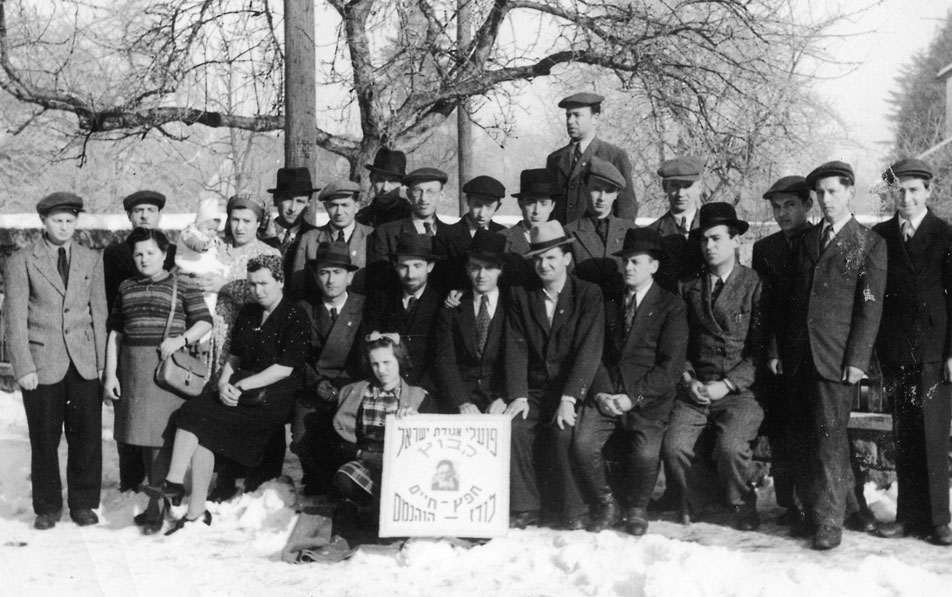
Photo provided by klaus.fohringer@aon.at; (source: USHMM)
Holzdoppelhaus - Neumarkt; British zone;
Hörsching DP Camp 60, has its own page. See also Kirchenholz
Hotel Europa [Europe], on Rainerstrasse; Elisabeth-Vorsta District in Salzburg, bombenbeschådigt (VD), US zone;
Hotel Weizer - Graz; British zone;
Hötting Höttingerau - UNRRA team 189, French zone; Hoetting is a district of Innsbruck . The former municipality was incorporated to Innsbruck 1938; closed1945.
Hundsturm - Wien V;
Hütte Liezen - Liezen; British zone
Hütteldorf - Wien, XIV?
Hüttenberg - Kårten/ Carinthia; British zone;
Lots more information on Austria I-K
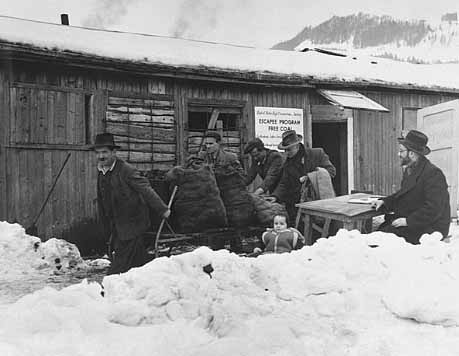
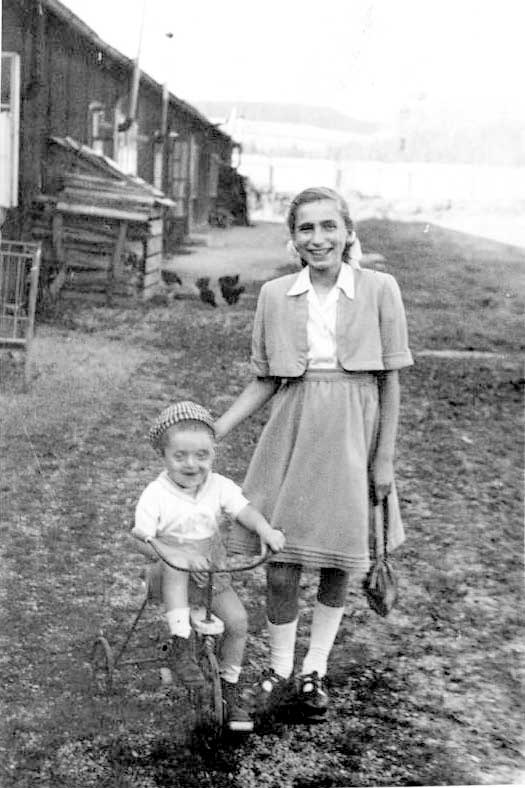
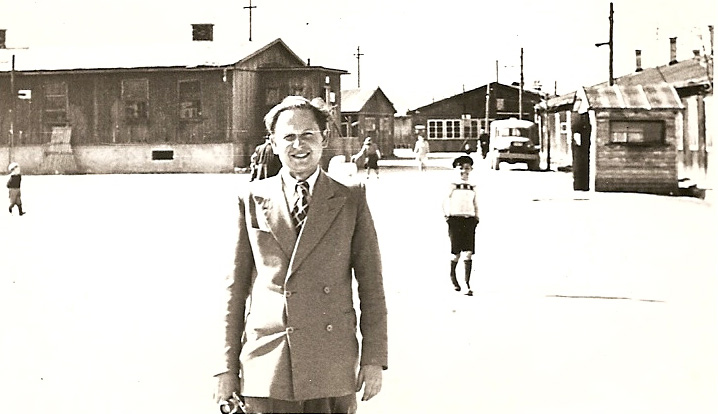
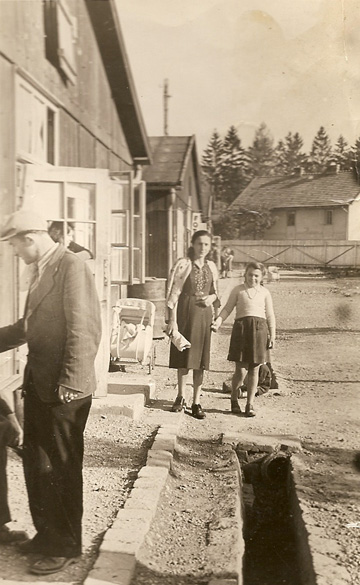
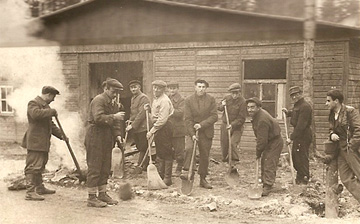
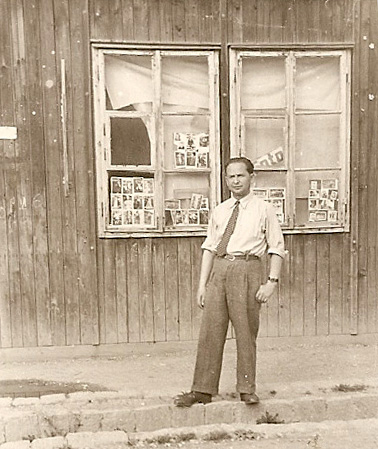
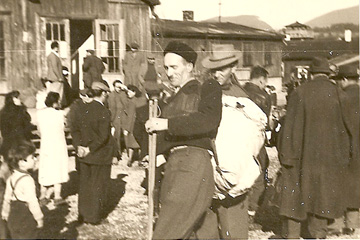
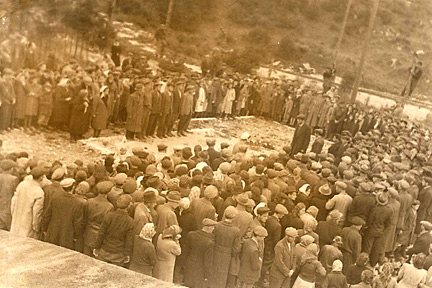
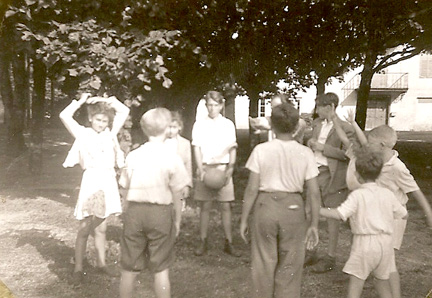
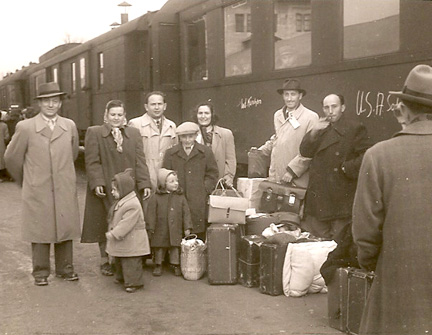
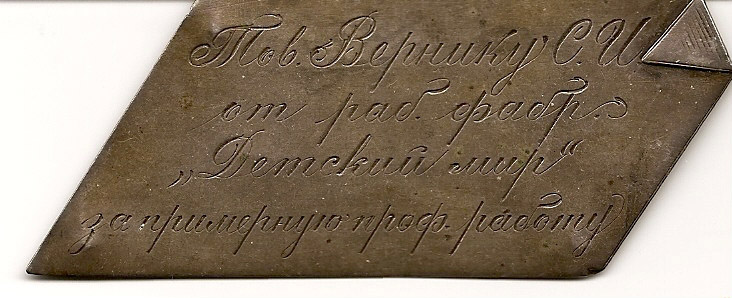
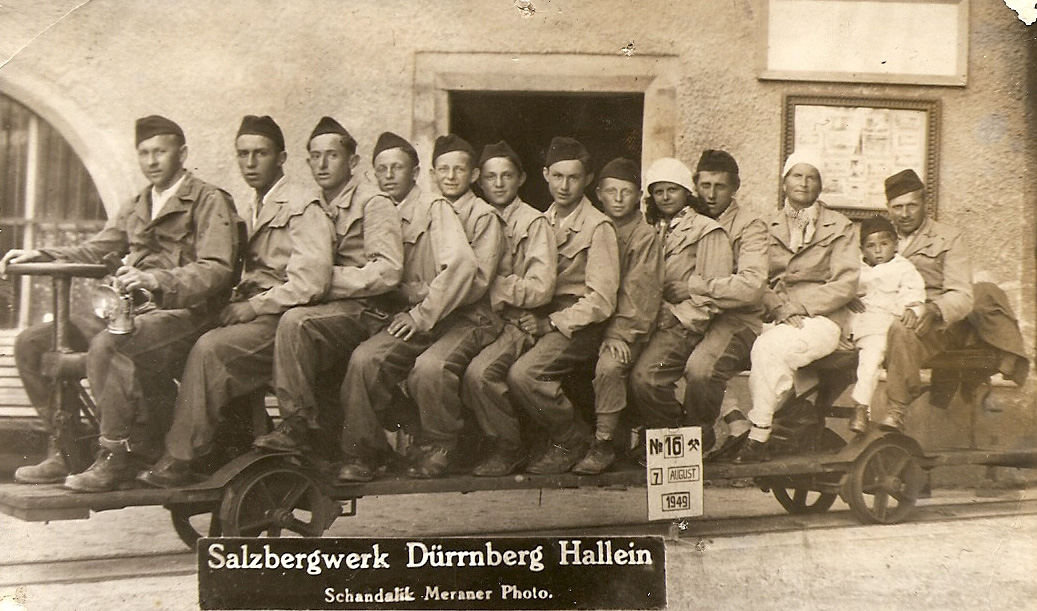
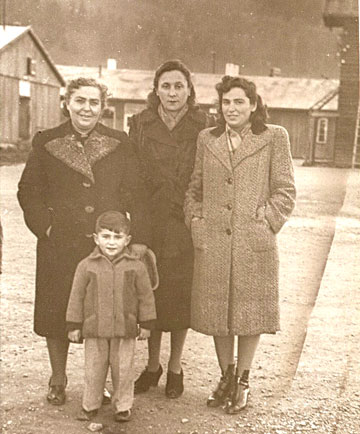
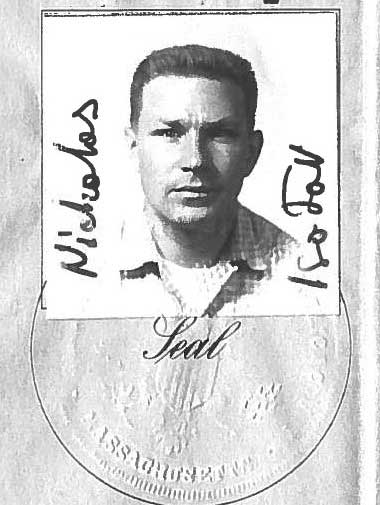
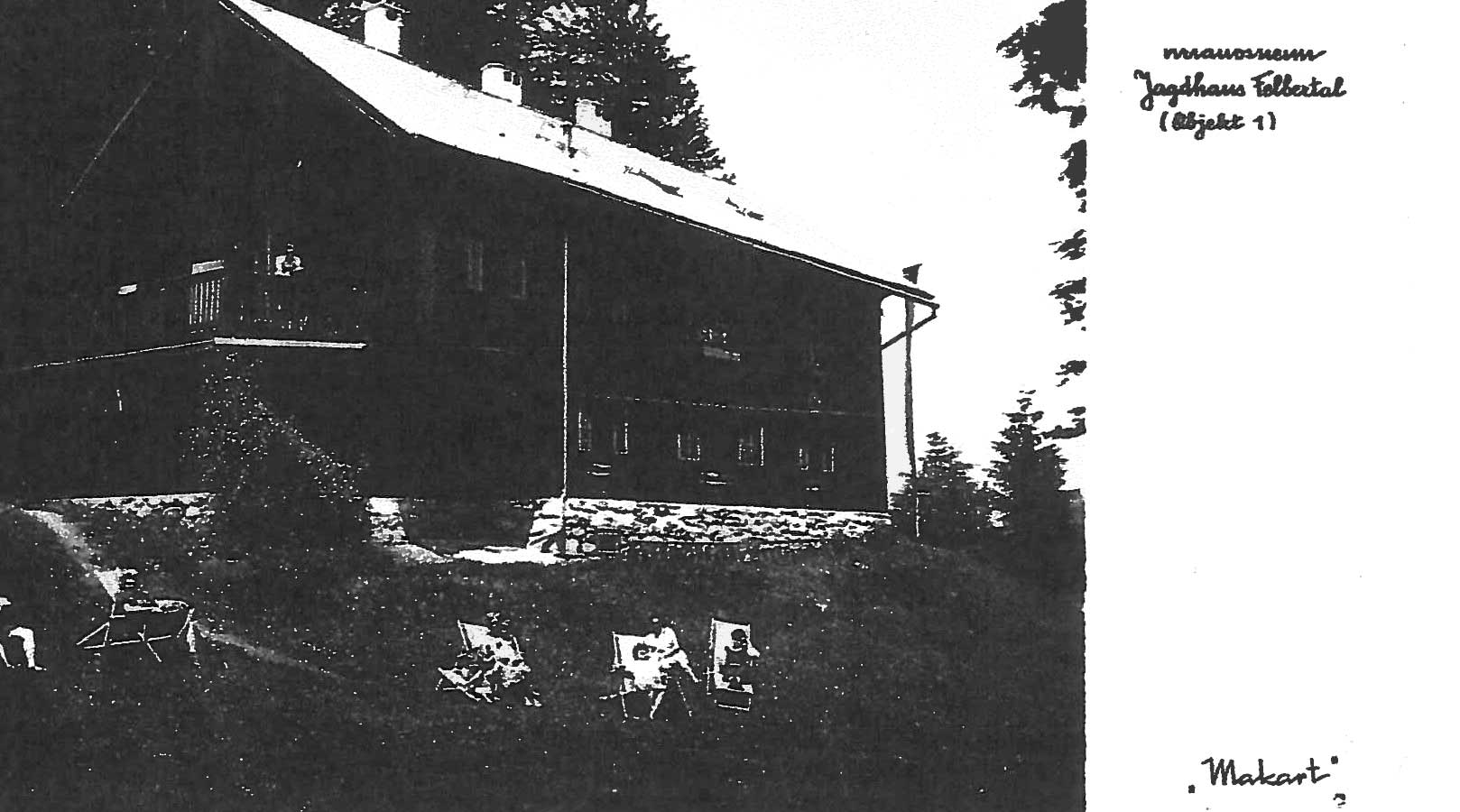
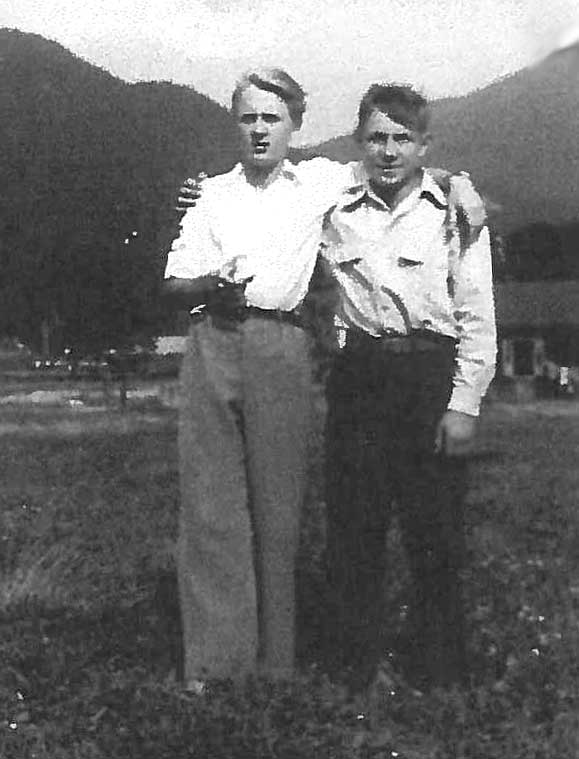
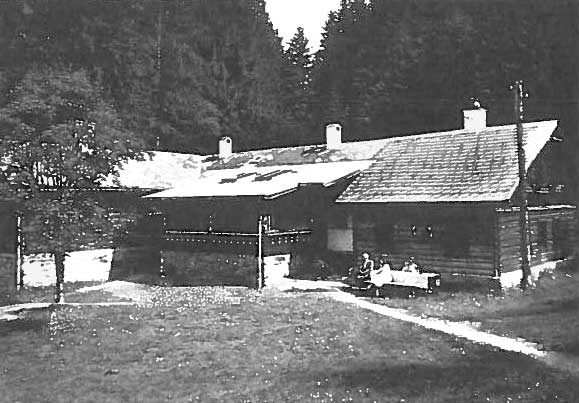
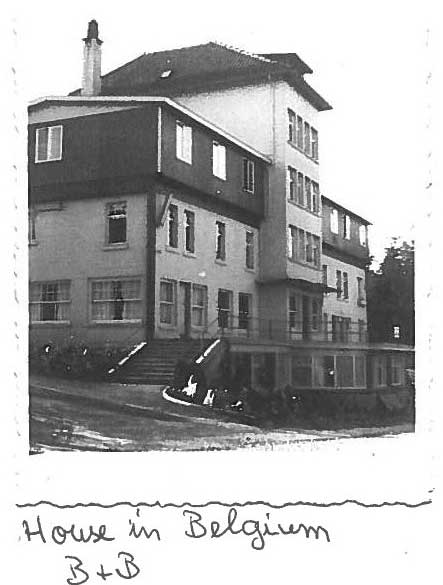
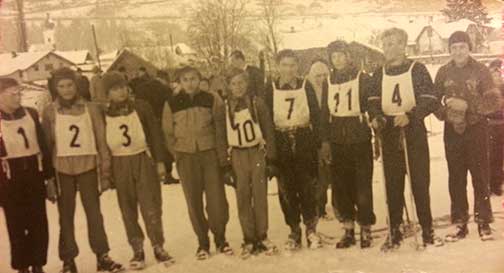
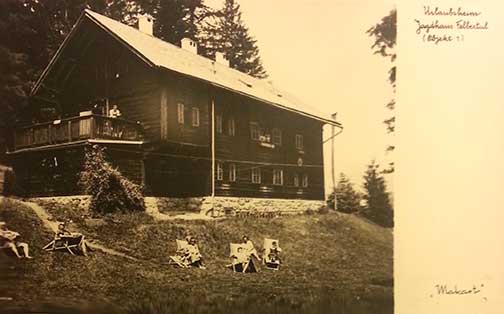
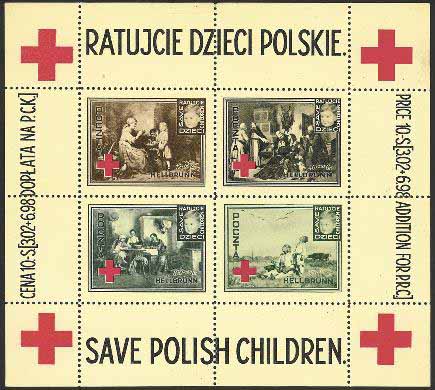
.jpg)
